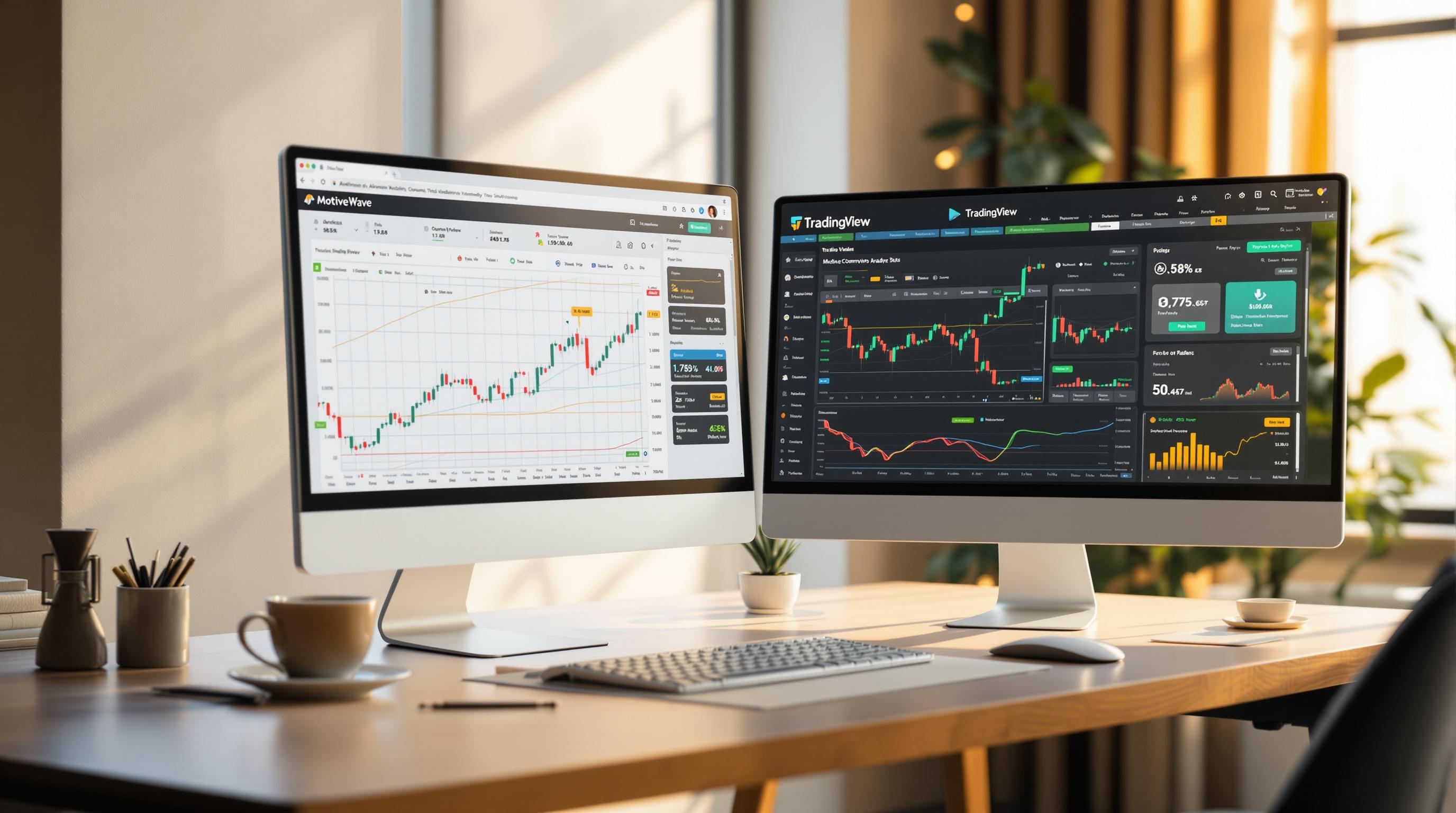- Data Accuracy: Reliable tools source data from trusted providers with frequent updates.
- Ease of Use: A user-friendly interface saves time and simplifies analysis.
- Pricing: Assess subscription costs, extra fees, and whether the tool’s features justify the price.
- Research Features: Look for tools supporting both technical and fundamental analysis, with customizable options.
- Advanced Capabilities: Modern features include AI-driven insights, investment screening, and dealer position tracking.
Quick Tip:
Test tools during free trials to evaluate data quality, usability, and support. Compare features and costs to find the best fit for your strategy.
5 Must-Check Areas When Choosing Stock Tools
Data Quality and Sources
Reliable stock analysis starts with accurate, up-to-date data. When selecting a stock research tool, check if it sources data from well-known providers and ensures regular updates. Look for clear documentation that explains where the data comes from and how often it’s refreshed.
Platform Design and Ease of Use
An easy-to-navigate platform can save you time and make analysis more efficient. Evaluate whether the tool’s interface is straightforward and supports quick decision-making. Also, consider how its pricing aligns with your investment goals.
"Going forward with any stock screening tool boils down to how well it meets your needs and how much you are willing to spend." - StockScreening101.com
Price and Return on Investment
Compare the tool's cost to your portfolio size and strategy. Take into account subscription fees, extra charges for premium features, and the level of customer support. Use this table to guide your evaluation:
| Cost Factor | What to Check |
|---|---|
| Base Subscription | Monthly or yearly pricing options |
| Data Access Fees | Extra charges for advanced data |
| Support Level | Quality of customer service provided |
Once you're confident about the pricing, ensure the tool includes the research features you need for both technical and fundamental analysis.
Research and Analysis Tools
The tool's research capabilities should align with your investment approach. Check if it offers features that support technical and fundamental analysis. Use any trial options available to test how well the tool meets your analysis needs.
I spent 100 hours finding the BEST Investing Tools
sbb-itb-2e26d5a
Top Features for Stock Analysis
Modern stock research tools go beyond the basics, offering advanced features that make investment analysis more effective.
Investment Screening Tools
Sophisticated screening tools help pinpoint potential investments using detailed filters. For instance, Stocksift provides access to over 9,500 stocks with a wide variety of filters:
| Filter Category | Options Available |
|---|---|
| Fundamental Analysis | 600+ filters |
| Technical Indicators | 40+ filters |
| Candlestick Patterns | 350+ patterns |
| Sector & Industry | 160+ filters |
| Price Action | 50+ filters |
| Dividend Analysis | 20+ filters |
You can tailor screens to match your investment strategy and save your preferred setups for future use. Tools also allow you to create watchlist alerts, so you're notified when a stock matches your entry or exit criteria. Many platforms now incorporate AI to refine and speed up analysis.
Machine Learning Analysis
AI-driven tools analyze massive amounts of market data to provide insights you can act on. A good example is Danelfin, which outperformed the S&P 500 by 74% between 2017 and August 2024 by combining fundamental, technical, and sentiment analysis. Similarly, FINQ's FINQFIRST portfolio surpassed the S&P 500 by 111.76% since its inception, leveraging AI scores based on multiple data points.
Market Maker Position Tracking
Tracking dealer positions adds another layer of insight to your analysis. Look for tools that provide:
- Real-time position updates
- Historical position trends
- Visualizations of dealer exposure
- Alerts for position changes
Tool Comparison Method
Try out each platform during its trial period and dive into its documentation and training materials to focus on the most important features. Use the table below to evaluate each tool step-by-step:
| Evaluation Category | Key Assessment Criteria |
|---|---|
| Data Quality | - Transparency of data sources - Frequency of updates - Historical data depth - Range of coverage |
| Analysis Features | - Screening tools - Availability of technical indicators - Backtesting options - Ability to create custom strategies |
| Platform Reliability | - System uptime - Accuracy of data - Speed of support responses - Quality of documentation |
| Cost Structure | - Subscription plans - Access to features - Usage limits - Extra fees |
| User Experience | - Ease of navigation - Learning curve - Mobile compatibility - Customization options |
Comparison Checklist
This evaluation framework helps you systematically review each tool. For example, FinChat.io provides up to 20 years of financial data on over 100,000 stocks worldwide and detailed segment data for more than 2,000 companies. This extensive dataset can help you make better investment decisions.
Here’s what to focus on during your review:
-
Data Depth and Accuracy
Ensure the platform verifies its data thoroughly and offers clear source transparency. For instance, FinChat.io tracks detailed metrics like Netflix's Total Paying Members or Amazon's Cloud Computing Revenue, offering specific insights into company performance. -
Analysis Capabilities
Test both preset and customizable strategies to see if the platform meets your needs. Look for features like robust backtesting, the ability to tweak strategies, exporting options, and tools that minimize potential biases. -
Support and Resources
Check out the platform’s educational materials and community involvement. Submit sample queries, engage in forums, and review the training materials and documentation to gauge their quality.
Conclusion
Now that we've covered the main features and evaluation methods, it's time to pull everything together. Choosing the right stock research tool means weighing your investment goals against the tool's features and costs. Using the evaluation process outlined here will help you make a well-informed decision that fits your strategy.
"Process improvement is only possible with a systematic, repeatable approach. Because a systematic, repeatable approach is a measurable approach." - StockScreening101.com
Wrap up your trial phase by focusing on these three key areas:
- Data Quality and Usability: Check if the data is accurate, updated in real-time, and offers enough historical depth. Ensure the tool provides both preset and customizable strategies to align with your investment style.
- Customer Support and Community: Interact with the platform's support team and explore community forums during your trial. The responsiveness and helpfulness you experience now will reflect the kind of support you’ll get long-term.
- Feature vs. Cost: Determine if the tool’s features justify its price. Look at data coverage, analytical tools, and customization options in relation to your budget.
Pick the tool that aligns with your strategy, offers dependable data, and provides clear analysis. A systematic evaluation process helps you avoid unsuitable options and ensures your choice can grow with your investment approach.



